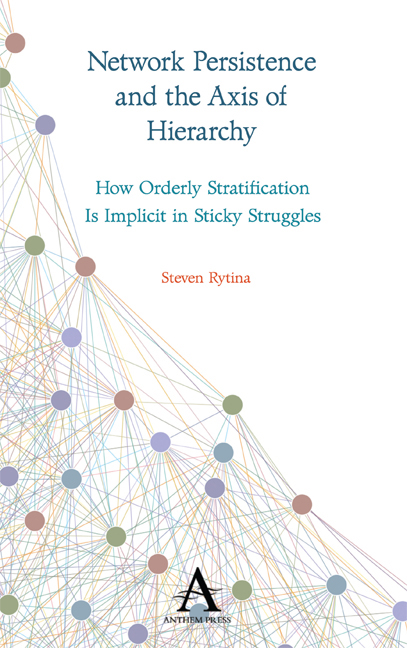 Network Persistence and the Axis of Hierarchy
Network Persistence and the Axis of Hierarchy Book contents
- Frontmatter
- Contents
- List of Illustrations
- Preface
- Chapter One Sticky Struggles: The Unified Pattern of Social Ranks Inherent in Networks
- Chapter Two Foundations of Cacophony
- Chapter Three Knots of Regularity
- Chapter Four Hierarchy: Inevitable but Inevitably Messy
- Chapter Five The Inevitable Emergence of Stratification
- Chapter Six Scaling Intergenerational Continuity: Is Occupational Inheritance Ascriptive After All?
- Chapter Seven Taming the Mobility Table
- Chapter Eight Is Occupational Mobility Declining in the United States?
- Chapter Nine The Continuum of Class over Time: Deconstructing Imposed Class to Uncover Empirical Classes
- Chapter Ten Concluding Reflections
- Appendix Why Robust Attraction Is (Effectively) Inevitable for Mobility Data
- Index
Chapter Ten - Concluding Reflections
Published online by Cambridge University Press: 30 April 2020
- Frontmatter
- Contents
- List of Illustrations
- Preface
- Chapter One Sticky Struggles: The Unified Pattern of Social Ranks Inherent in Networks
- Chapter Two Foundations of Cacophony
- Chapter Three Knots of Regularity
- Chapter Four Hierarchy: Inevitable but Inevitably Messy
- Chapter Five The Inevitable Emergence of Stratification
- Chapter Six Scaling Intergenerational Continuity: Is Occupational Inheritance Ascriptive After All?
- Chapter Seven Taming the Mobility Table
- Chapter Eight Is Occupational Mobility Declining in the United States?
- Chapter Nine The Continuum of Class over Time: Deconstructing Imposed Class to Uncover Empirical Classes
- Chapter Ten Concluding Reflections
- Appendix Why Robust Attraction Is (Effectively) Inevitable for Mobility Data
- Index
Summary
Sticky struggles supply a master image for a reconceptualization of stratification that emphasizes networks. Networks supply the stickiness. And stickiness leads to a simple, unified result— rank is mapped to a principal axis. The principal axis is a front, or boundary, where past meets future.
The argument has unusual features. For example, the principal axis is not an assumption or hypothesis. The thesis of a principal axis does not emerge from the exegesis of old texts. No derivation from authoritative precedents is attempted. Instead, the derivation is from “first principles” like “learning uses up time.” This premise, like the others required, is a commonplace that few are likely to question.
However, such mundane beginnings gradually segue into heresies. As one example, the argument counters the widely accepted presumption that analysts may conjure up as many dimensions of stratification as they like. Of course, no argument can limit the agency of analysts but arguments can inform choice. Conjuring dimensions remains an option, but the potential magic is somewhat diminished. Only one dimension, the principal dimension, will emerge at the boundary where past meets future.
The empirical content of the central claim was that the principal dimension will exceed all competitors in “explanatory power.” This was proved to be the case, repeatedly. Meanwhile, the theory behind the claim is of interest in its own right.
To repeat, the argument is unusual. Many supporting details have been laid out in the preceding chapters. A wide range of topics have been addressed. A good fraction of the results are likely counterintuitive for many readers. A special challenge is that what is contrary to intuitions almost surely varies across assorted prior perspectives. This suggests that many may wish to thrash out their own judgments, perhaps accepting some elements while resisting others.
My own sense in composing this material is that the tight logical connections often form a complete web. For many sets of propositions, links of mutual implication hold from any to all of the others. The latitude to accept or reject claims in such sets is often tightly constrained.
With this in mind, I want to try to underscore some of the strong logical connections that unite parts of the argument. At least some of these are novel. Rather often, ideas that are highly compelling can be shown to entail unfamiliar takes on other conceptions, challenging or reversing widely held notions.
- Type
- Chapter
- Information
- Network Persistence and the Axis of HierarchyHow Orderly Stratification Is Implicit in Sticky Struggles, pp. 307 - 334Publisher: Anthem PressPrint publication year: 2020


